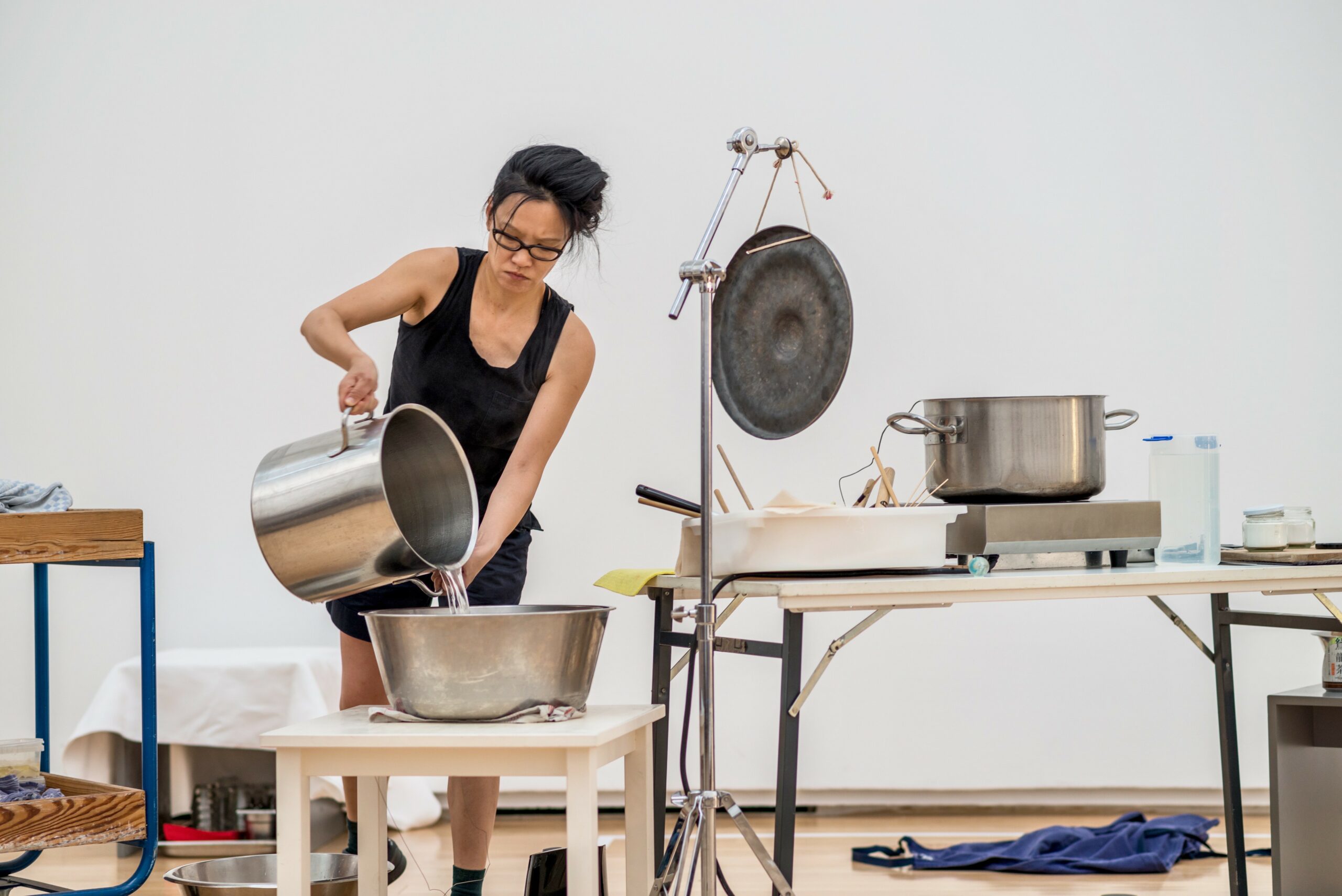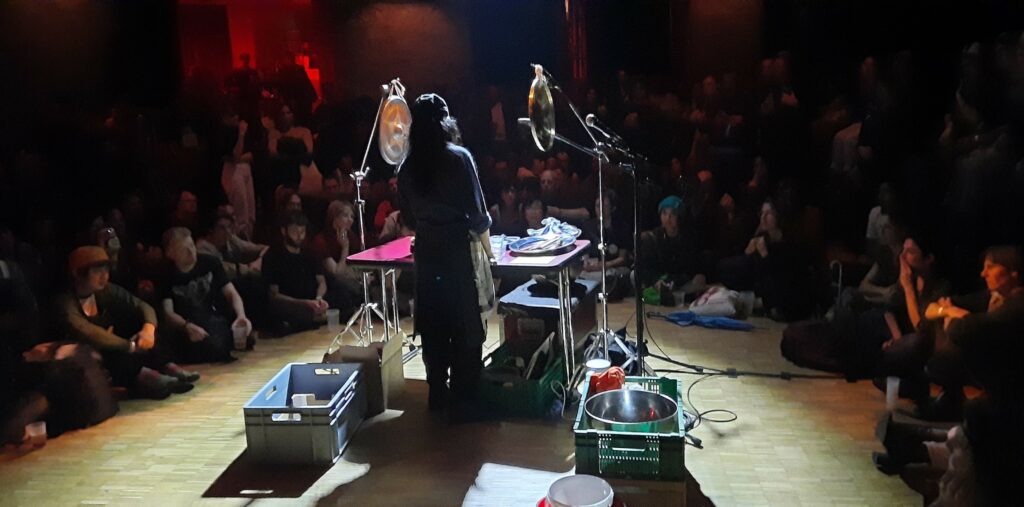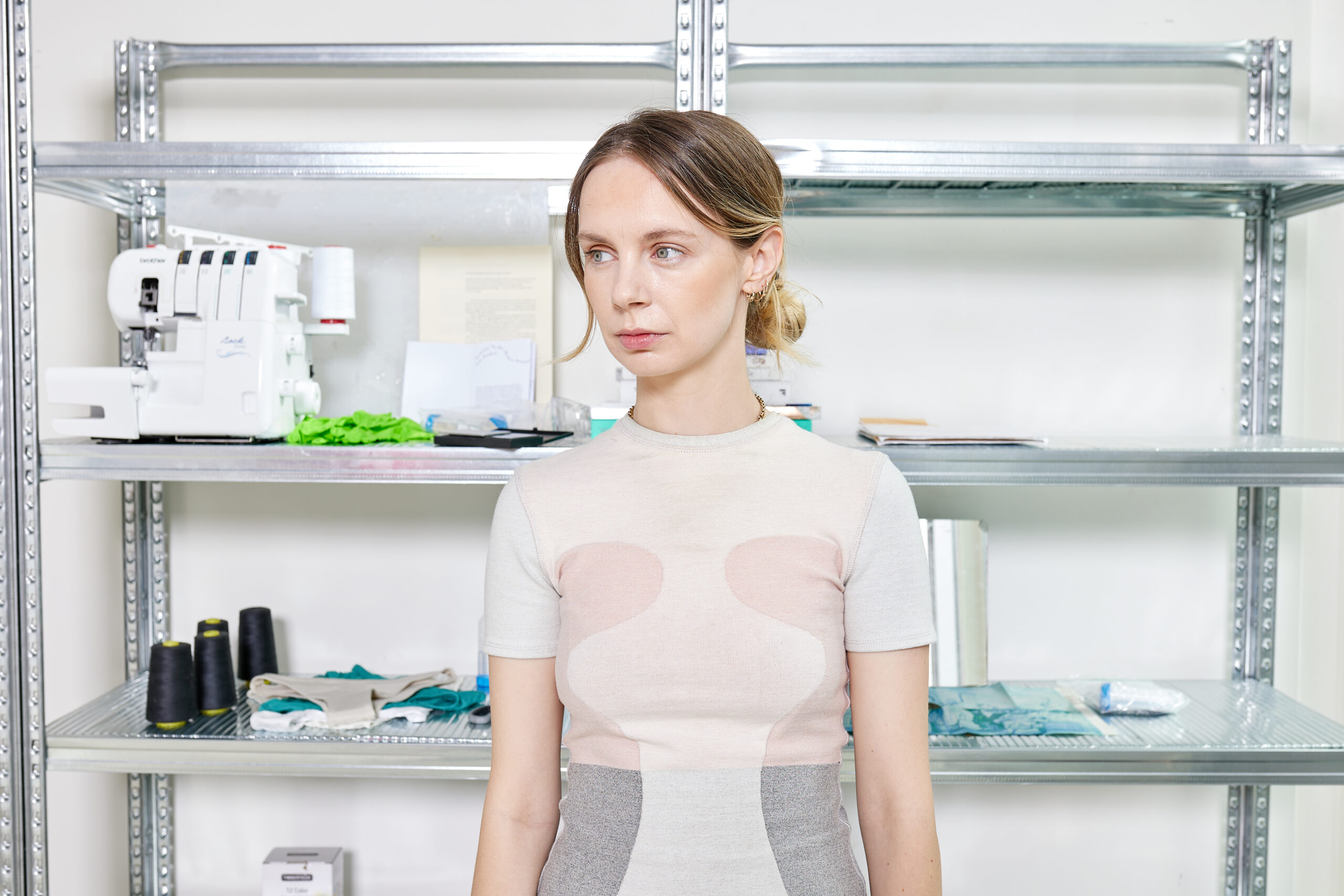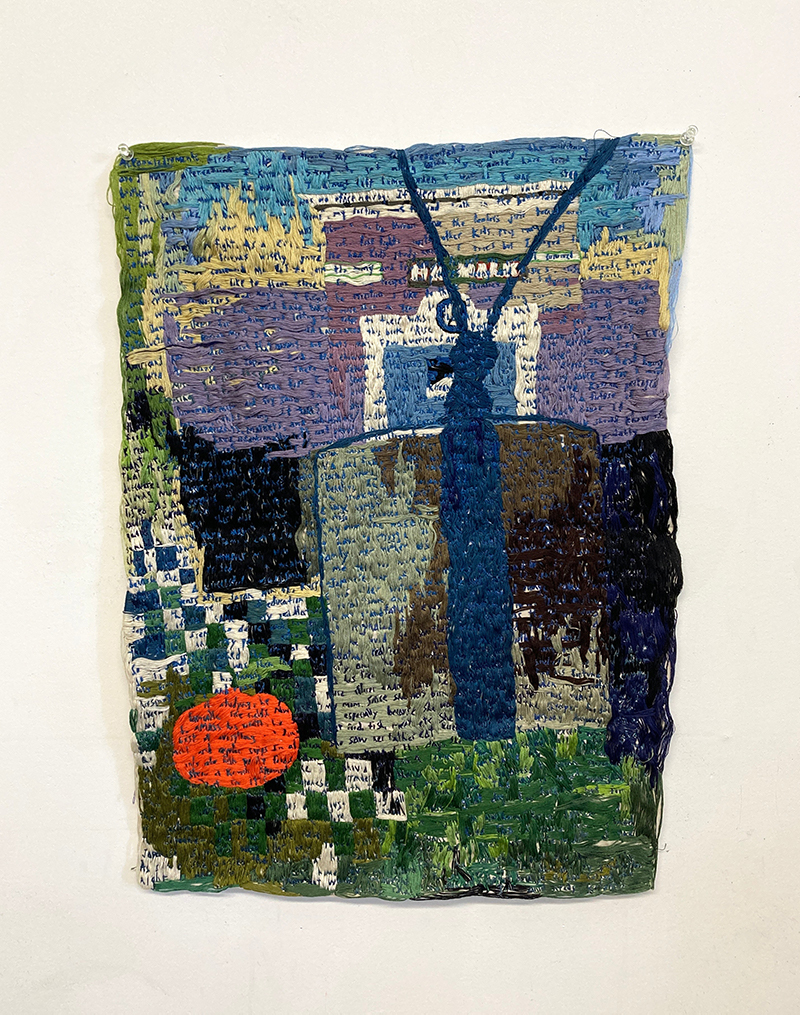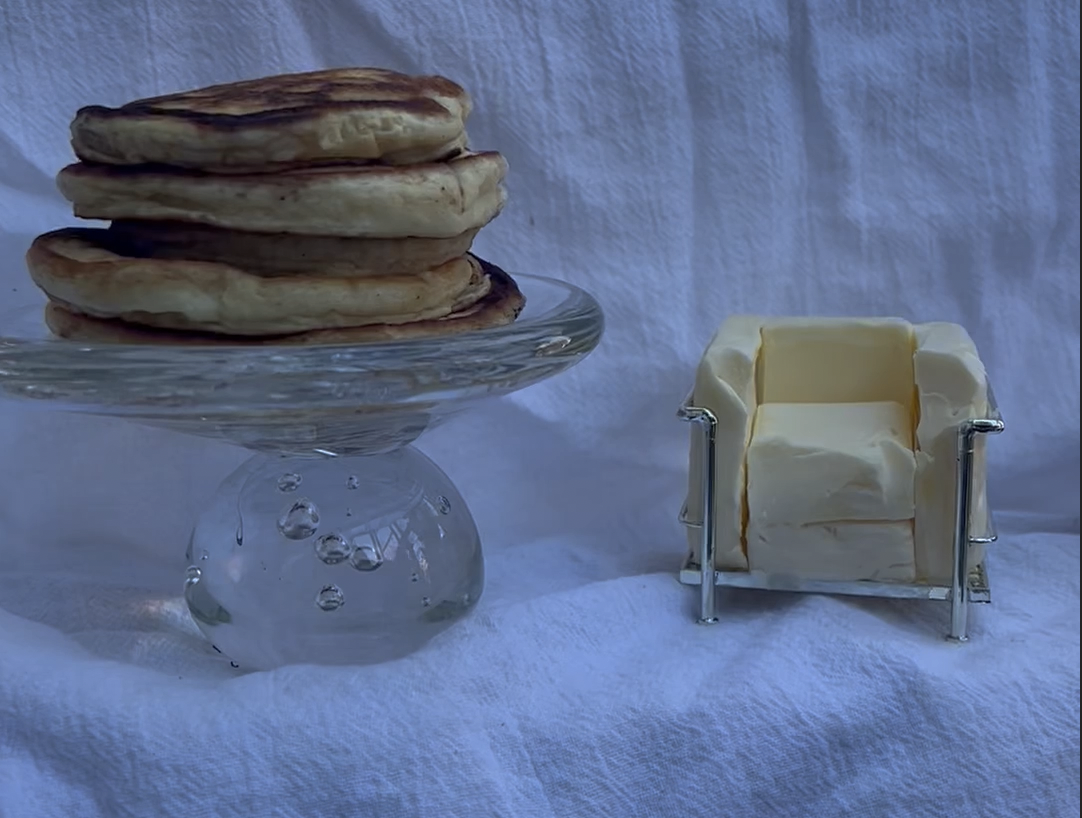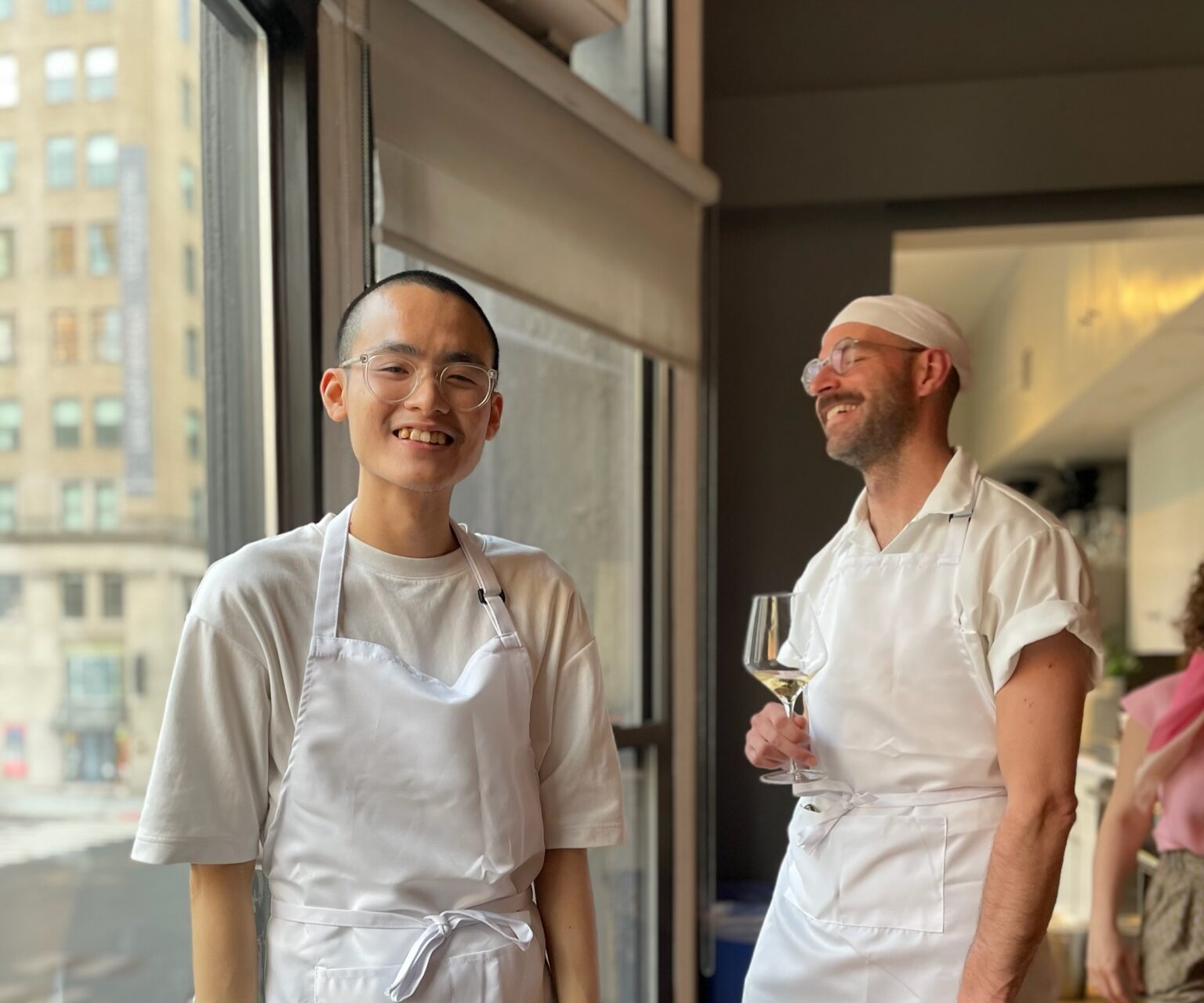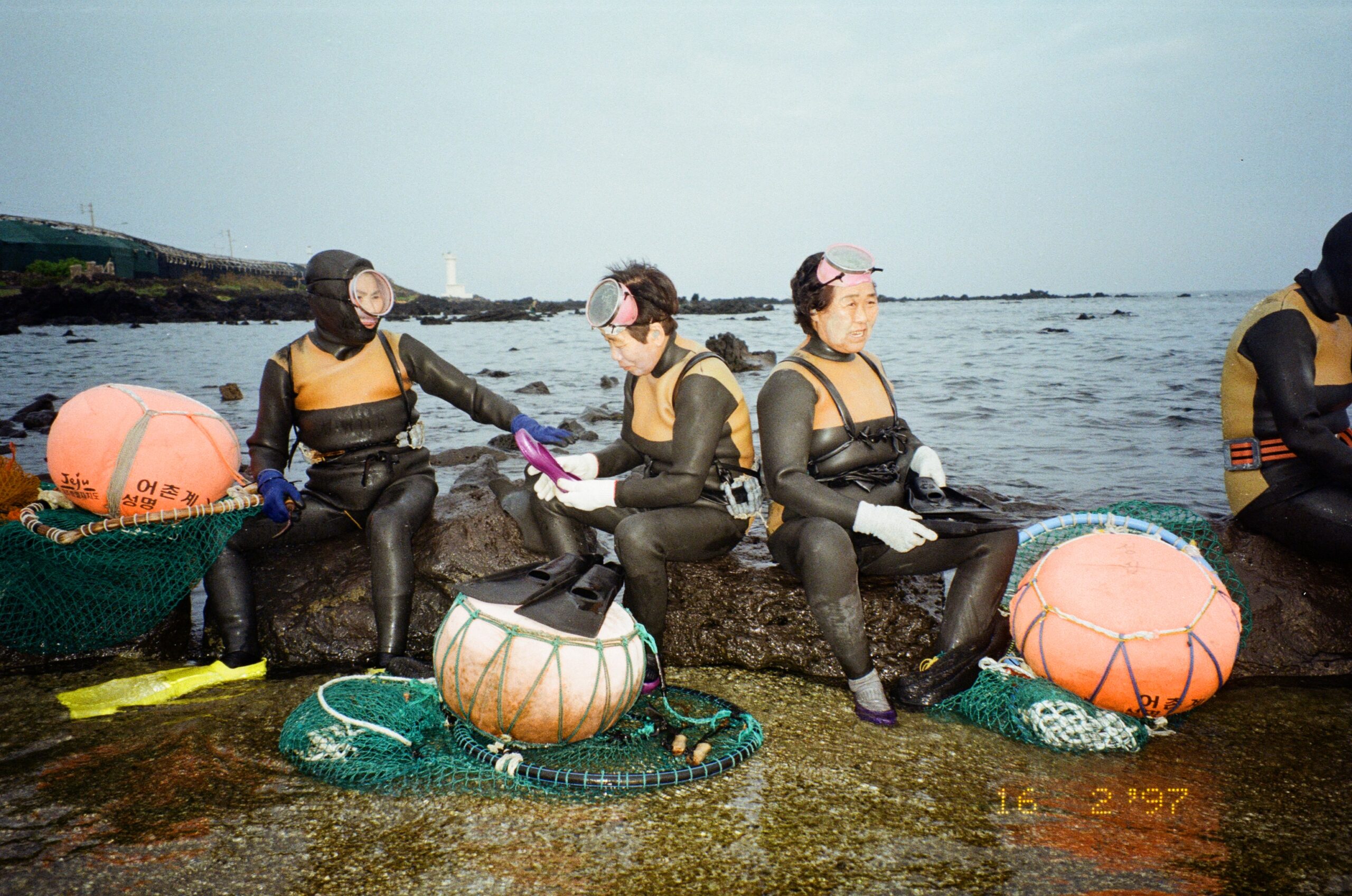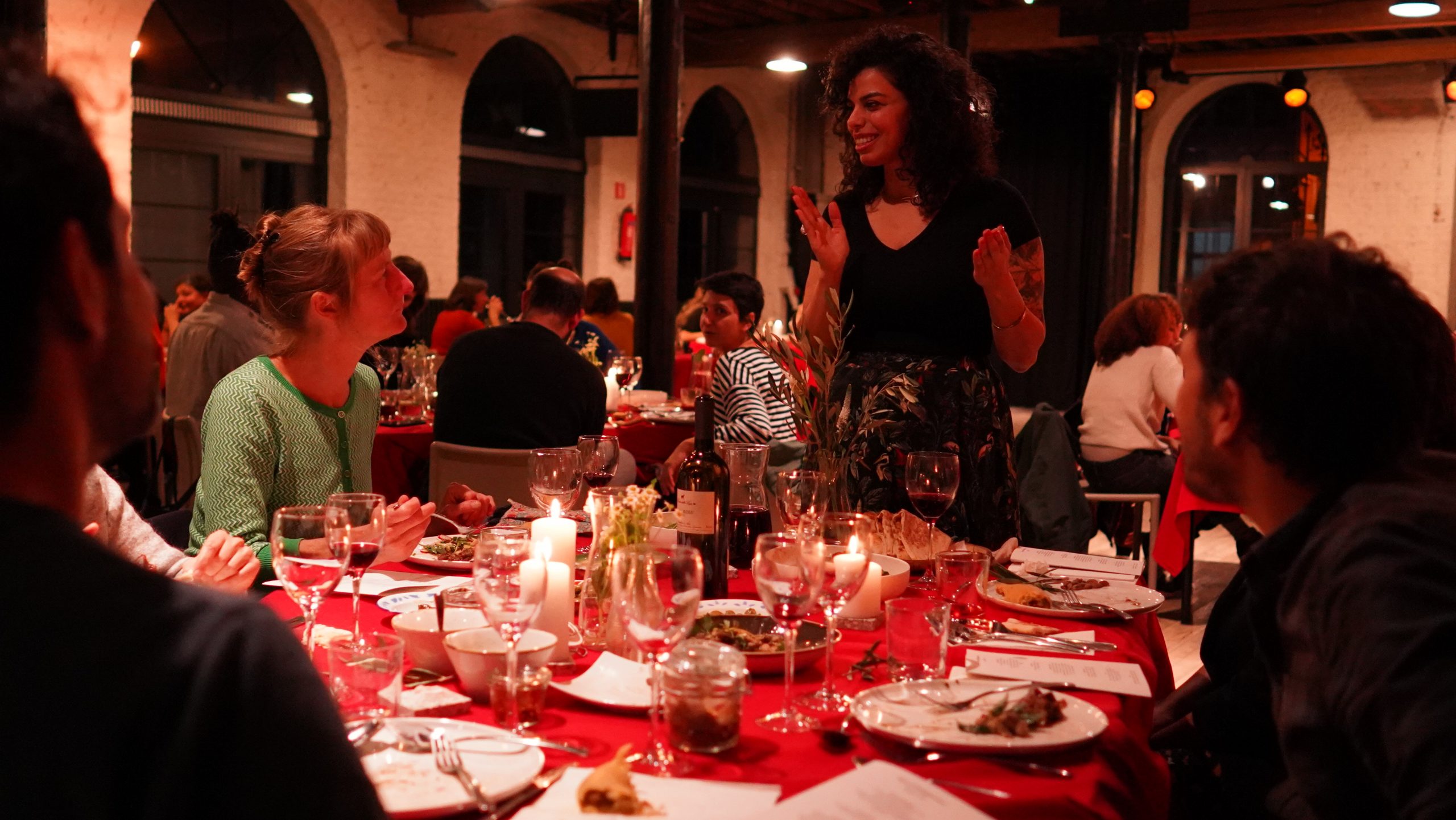Within cooking there is an innate rhythm. The clink of cookware, the whisper of a whisk, the sizzle of hot oil — these sounds serve as markers to attune the cook to the passage of time, an essential ingredient to the preparation of any dish. Across her practice, OnYee Lo taps into this internal metronome. The Hong Kong-born London-based artist draws from her background as a cook, baker, and musician to create immersive, sound-based performance works that interrogate throughlines of labor, care, and hospitality within the kitchen. Collaborative, frenetic, and at times uneasy there is a vulnerability within OnYee’s performances that invites connection. In this interview, I catch up with OnYee ahead of her trip to Glasgow, where she recently performed her work at the opening of the experimental contemporary music festival, Counterflows. We talk about working rhythms, labor, and the ritual in tending to fire.
Isabel Ling:
Tell us a little about your practice and the medium you work in.
OnYee Lo:
I used to work with videos and installations when I was finishing art school. Later, I took some time off and messed around with music. I sang in bands, [and] played the drums and synthesisers. But cooking has always been something that I spend a lot of time doing. I can get quite obsessed with it. I think it’s because I grew up in Hong Kong. And cooking and food was a very natural way of connecting back to my roots when I arrived in London. I slowly learned [how to cook] because I had to in order to survive. As a result I’ve worked as a cook, baker, even catering in a more professional setting. But now I mostly bake, and sometimes I cater festivals. Not big festivals, I am feeding musicians, usually at those [festivals] that are geared towards experimental music.
I went to theatre school when I was in Hong Kong, and was a student in the technical arts department. It was the first time that I learned about audio theory and became interested in the physics and perception of sound. The recent execution of my personal work is focused on the accumulation of living, surviving, and pleasure. It all ends in a clutter that allows me to navigate different lived experiences. I think a lot of times people imagine that a big part of my work is about sound, but actually my starting point is a bit different, maybe it’s more about a working rhythm, or time marking.
IL:
Can you speak more about this working rhythm?
OL:
As a cook, or as a baker, your job is to produce quality food within constraints with limited resources and limited space and time. You are demanded to work smartly and efficiently and to maximise productivity. I think I have a little obsession with how to make everything come together at the same time, all while keeping everything alive. When baking, I can’t be like, ‘Oh, I’ll just let this wait for 20 minutes, and then I’ll come back to tend it.” When I work I often try to keep the whole time full and fluid. Different ingredients and processes have different rhythms depending on the material, so you could have procedures that are quite in contrast with each other, a process that is abrupt or transient. It’s pulling together multiple time dimensions. I see it as my humble take on polyrhythms in the kitchen.
IL:
Your piece ‘O Hemiola’, features you preparing a common meal as a performance in front of an audience, that often then consumes it afterward. You describe it as designing a physical system that reveals social patterns. How does this working rhythm factor into that?
OL:
Well, actually ‘O Hemiola ’ started as a presentation of a work in progress. It was a kind of representation of inexperience [within cooking]. In a way, it’s an augmentation of my inner metronomy, I’m giving it sound.
My family in Hong Kong practises Taoist rituals like the worship of gods and ancestral offerings. In these funerals and other festive celebrations there is often the usage of fire in funerals and other festive celebrations. As an element, fire symbolises various myths, acts as a medium of transformation, and as a tool for cleansing. But I really took away a lot from the practice of burning Joss paper, and knowing that you cannot let the fire die. It’s a very simple way of thinking, some might say it’s just superstition, like, “If you let the fire die, something bad is going to happen to you.” But it’s this simple act that I am really drawn to. I don’t have a spiritual practice, but it’s a way to attune to breath, an awareness of breathing or not breathing. One could encounter a similar somatic experience at a Drone concert. I realised this metronome, or this fluent force, is often present at the back of my head while handling multiple mad things that could go wrong at any time.
When I was first invited to present [‘O Hemiola ’’] I was given seven minutes to present it. Although there were some planned tasks in addition to the actual cooking, I actually didn’t go through it too much just so that I wouldn’t be faking my struggle. The skill takes away the thrill (pun!)
I don’t want to see the outcome of a solved problem…I want to observe how a conflict is resolved , to be taken on an open journey.
IL:
What is the dish that you are making in ‘O Hemiola ’?
OL:
I’m actually making tofu.
IL:
Why tofu?
OL:
The memory of my mom being super happy and excited because she succeeded in making this specific type of tofu at home when I was a child. Most people would rather buy from shops because it is a tricky thing to make. It’s a very tasty and comforting treat to have. And one thing I really miss about Hong Kong is the shops that sell tofu products .
IL:
What about it did you miss?
OL:
Sensorially, these white-tiled shops have this very fresh and ‘alive’ smell, must be the sprouts? It was fascinating to see these white soft masses floating in buckets of water. And the large slabs of the firm tofu being cut into satisfying squares with metal scrapers. But to answer your question about why I chose tofu, the process of making tofu requires a lot of precision in terms of time and temperature control.
IL:
I feel like it’s hard to make tofu in seven minutes!
OL:
Well to be honest with you, there is 20 minutes of wait time before it can be consumed. And also, it’s silken tofu, not pressed tofu.
IL:
Why is it important for you to highlight struggle in your performances?
OL:
I think when people face struggle or see struggle there is vulnerability that allows for conversation. I value that a lot. For example, in a music setting, I get to work with or see a lot of free improvisers performing, where the “conversations”, or negotiation, and sometimes disagreement, or struggle, are put on show. And because of that the sound is not always agreeable , but I think being able to experience the progress makes everything more inclusive and relatable to individuals. I don’t want to see the outcome of a solved problem and plain performance of virtuosity. I want to observe how a conflict is resolved , or to be taken on an open journey.
Different ingredients and processes have different rhythms depending on the material, so you could have procedures that are quite in contrast with each other, a process that is abrupt or transient. It’s pulling together multiple time dimensions.
IL:
So labour is something that you focus on a lot throughout your performances.
OL:
Yes! I was invited to do a performance last year on May 1st. By chance, the venue was where the Labour Party Office is in Norfolk, Norwich. We all wanted to respond to the fact that it was May Day. In the end I chose to put on an experiment – to give every audience member a task or a chance to contribute. I have always been interested in how a kitchen’s design has developed through Taylorism. The women [designers] who have shaped what domestic kitchens look like today have turned the kitchen more into a laboratory. The kitchen is probably the only room in the house where you really need to consider all the pragmatics and logistics . They talked about the cook’s movement in relation to how the counter should be built. The golden triangle of the sink, stove and fridge etc. The ergonomics of it. It’s like that’s the only space in a family home that women have a say in. I tried to incorporate different details of kitchen design in this piece. I asked some members of the audience to build a table up to a specific height, to be a tea towel holder, a sink, a bin It was the first time I was trying the idea. And I think I enjoyed it, so as the people who participated or willingly participated. They all made a meal while the kitchen was being put together. It was a very fun orchestration
I think that human labour (the cook) and non-human labour (the tool) have a complicated relationship together. Like how humans should be cooperative with objects that were designed by humans. I’m interested in the idea of how to reshuffle and reorganise every human and non-human component of the kitchen into my ideal system of work.
IL:
I know that you incorporate sound often in your practice, but do you listen to music while you work?
OL:
Sometimes during work, but not all the time. I also love silence. [In ‘O Hemiola’] I will hit a gong over the course of the performance and it is this idea to keep the transient sustain and alive. For me, it is time that makes the music.
